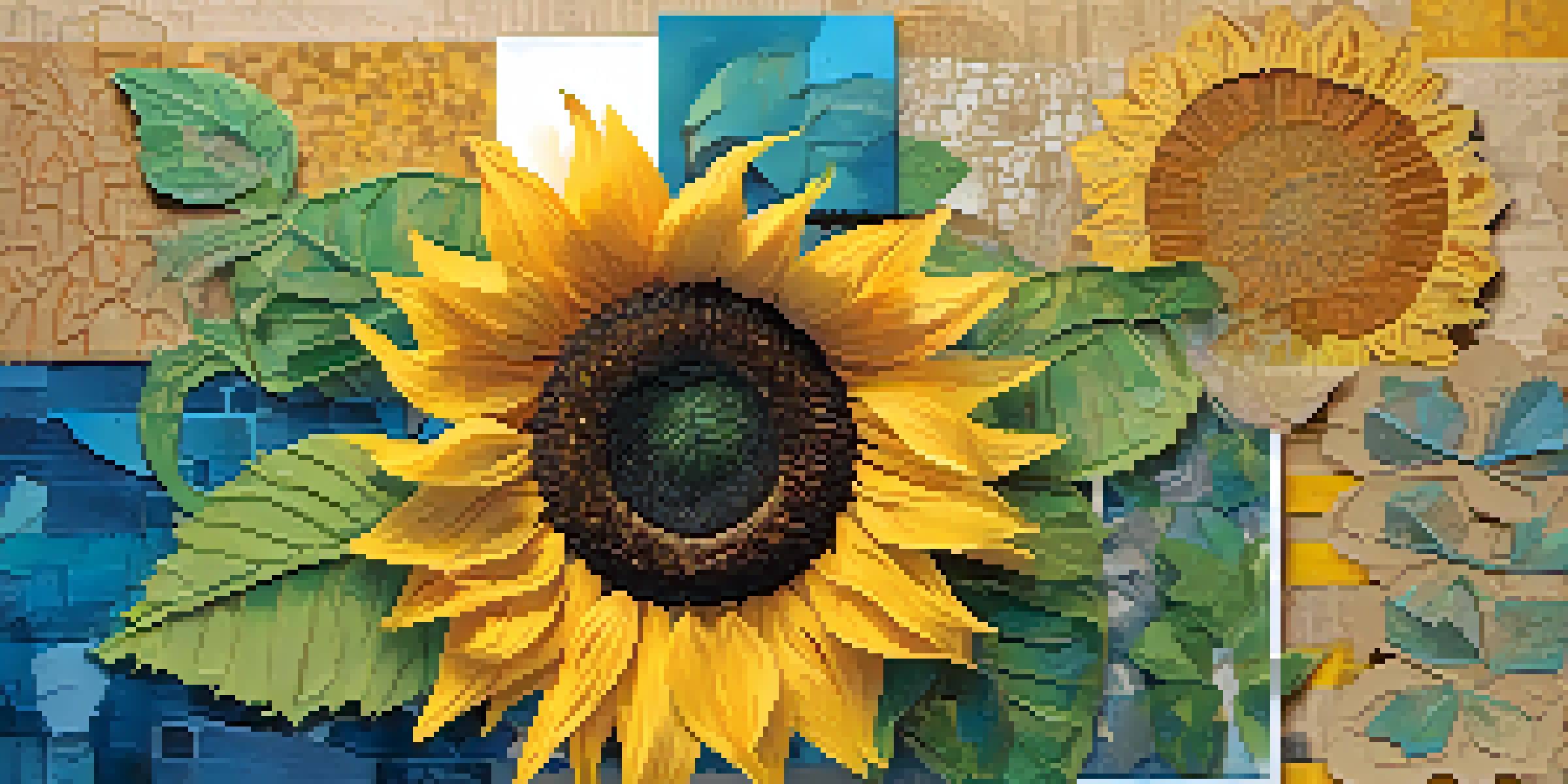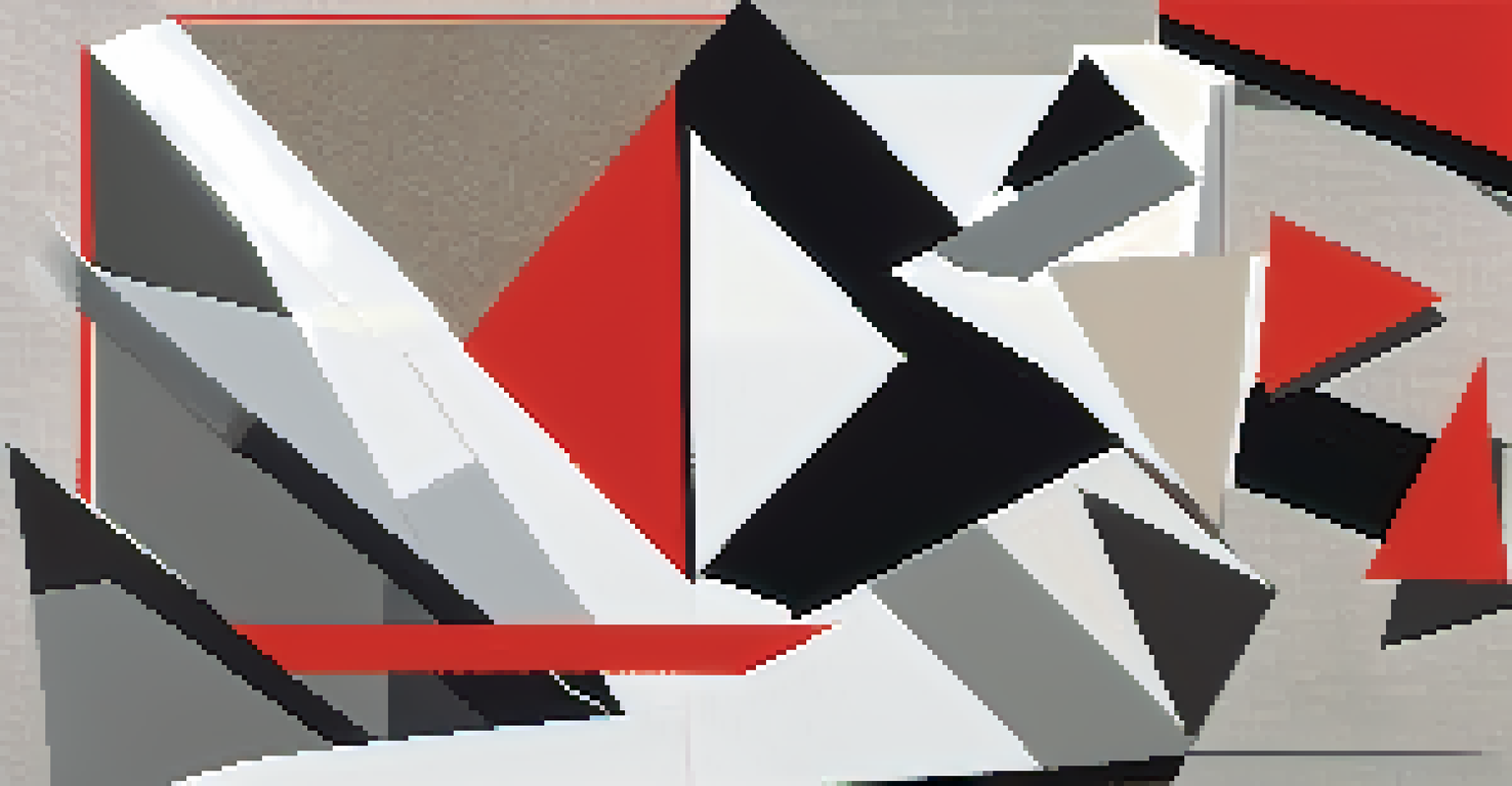The Importance of Composition in Collage Painting Techniques

What is Composition in Collage Art?
Composition in collage art refers to the arrangement of various elements within the artwork. Just like a chef arranges ingredients to create a beautiful dish, artists must think carefully about how to position their materials. This can include images, textures, colors, and forms, all coming together to create a cohesive piece.
Art is the most beautiful of all lies.
Effective composition guides the viewer's eye through the artwork, creating a visual narrative. It can evoke emotions and convey messages that resonate deeply with the audience. Therefore, understanding composition is crucial for any artist looking to make a significant impact with their collage.
Moreover, composition isn't just about aesthetics; it also plays a functional role in how the elements interact. A well-composed collage will harmonize contrasting elements, making the final piece not only beautiful but also engaging and thought-provoking.
The Role of Balance in Collage Composition
Balance is a fundamental principle of composition that helps create a sense of stability in collage art. Artists can achieve balance through symmetrical arrangement, where elements are evenly distributed, or asymmetrical balance, which involves an uneven distribution of visual weight that still feels stable. Think of it like balancing a seesaw – both sides need to feel right for the piece to resonate.

When elements are balanced well, the artwork feels more complete and inviting. An unbalanced composition can create tension, but too much tension can overwhelm the viewer. Striking that perfect balance invites the viewer to linger and explore every detail of the collage.
Composition Arranges Art Elements
Composition in collage art refers to the careful arrangement of images, textures, and colors to create a cohesive and engaging piece.
In collage, balance can also be achieved through color and texture. For instance, a heavy, dark texture on one side might be balanced by a lighter, airy color on the opposite side, creating a dynamic yet harmonious effect.
Creating Focal Points in Collage Art
A focal point in a collage is the area that draws the viewer's attention first. It's the star of the show, so to speak, and can be achieved through contrast, size, or placement. For example, a large, vibrant image placed centrally can automatically become the focal point of the artwork.
Creativity takes courage.
Establishing a clear focal point helps to guide the viewer’s journey through the piece. This is akin to a well-written story, where the plot centers around a main character or event. Without a focal point, the collage can feel chaotic, leaving viewers unsure of where to look or what to feel.
However, it's essential to balance the focal point with secondary elements that support the overall theme. These secondary elements should complement the focal point without distracting from it, creating a harmonious visual experience.
The Importance of Color in Composition
Color plays a pivotal role in the composition of a collage, influencing mood and emotion. Different colors can evoke distinct feelings, much like music can set the tone for a scene in a movie. For instance, warm colors like red and orange can create energy and excitement, while cool colors like blue and green tend to evoke calmness.
Using a color palette strategically can unify the various elements in a collage. Consistent color themes can help tie disparate images together, creating a cohesive look that feels intentional. This is similar to how a well-planned outfit uses complementary colors to create a stylish appearance.
Balance Creates Visual Stability
Achieving balance in collage composition through symmetrical or asymmetrical arrangements helps create a sense of stability and invites viewers to explore.
Moreover, contrasting colors can be used effectively to draw attention to certain areas. Just as a pop of color in an outfit can make a statement, a burst of unexpected color in a collage can captivate the viewer's attention and encourage them to explore the artwork further.
Using Space Effectively in Collage Composition
Negative space, or the space around and between the subjects of an artwork, is as important as the elements themselves. In collage, this empty space can provide breathing room, allowing the viewer's eye to rest and enhancing the overall composition. Think of it as the white space in a well-designed webpage – it helps to highlight the content.
Effective use of space can also guide the viewer's gaze and create a sense of depth. By varying the spacing between elements, artists can create a layered effect that draws the viewer into the collage. This depth can transform a flat piece into a three-dimensional experience.
Additionally, too much clutter can overwhelm the viewer, making it difficult to appreciate individual elements. A thoughtful approach to space ensures that each component has its moment to shine, contributing to a more impactful and engaging artwork.
The Impact of Texture on Composition
Texture adds a tactile dimension to collage art, influencing how viewers experience the piece visually and physically. Different materials, from rough paper to smooth fabric, can create varied textures that enhance the overall composition. For example, a rough texture can evoke a sense of rustic charm, while a sleek texture might convey modernity.
Incorporating texture can also create contrast, making certain elements stand out more than others. It’s similar to how a textured wall can make a flat-screen TV appear even more vivid. This contrast can draw the viewer's eye to important areas of the composition.
Color Influences Mood and Focus
Color plays a crucial role in collage composition by evoking emotions and unifying elements, while contrasting colors can draw attention to focal points.
Furthermore, texture can engage the viewer’s senses beyond just sight. When viewers can almost 'feel' the artwork through its texture, it creates a deeper emotional connection. This sensory engagement can elevate a collage from being merely visually appealing to an interactive experience.
Experimenting with Composition Techniques
Collage art is inherently about experimentation, and this extends to composition techniques. Artists are encouraged to play with different layouts, materials, and styles to discover what resonates best with their vision. Just like scientists in a lab, artists can mix and match elements to see what works and what doesn’t.
Trying out unconventional compositions can lead to surprising and exciting results. For instance, placing elements at odd angles or layering them unexpectedly can create a dynamic visual narrative. This form of experimentation allows artists to break free from traditional boundaries and explore new creative territories.

Ultimately, the best way to understand the importance of composition is through practice. Artists should embrace mistakes as learning opportunities, and every collage created is a stepping stone toward mastering the art of composition.